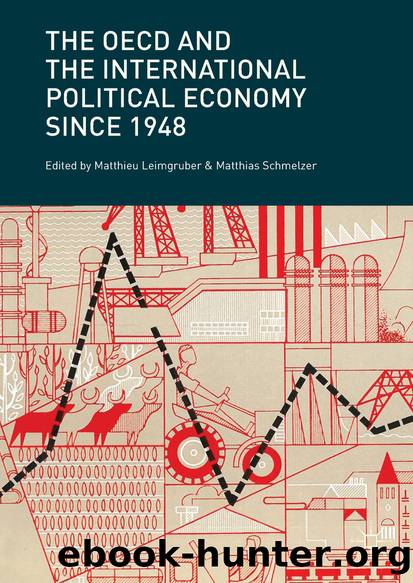The OECD and the International Political Economy Since 1948 by Matthieu Leimgruber & Matthias Schmelzer

Author:Matthieu Leimgruber & Matthias Schmelzer
Language: eng
Format: epub
Publisher: Springer International Publishing, Cham
Conclusion
Unlike the ECSC and the EC in the case of the six “core Europe” founding member states and the present-day EU, the OECD had limited direct impact on steel policy or the steel industry in the Western world during the Cold War. It certainly had tangible influence in different ways, but such influence is difficult to measure without tracing it in microscopic empirical studies. Thus, the Steel Committee’s collective work to identify and reallocate scrap during 1948–1949 probably helped to increase steel output in Western Europe, accelerating economic reconstruction somewhat. The OECD’s attempt to foster research collaboration on steel-related issues in the early 1950s at least led to the major AIRBO project, which was taken over by the ECSC after 1953, however. The Organization’s early work on air and water pollution by the steel industry (and other sectors) in the early 1960s may have facilitated the formation of international scientific networks on the intersection between technology and natural sciences. At the same time, it could also have accelerated the formation of transnational industry networks beyond the EC which pleaded for treatment of the energy and capital intensive industry as a special case to be exempted from prospective anti-pollution measures. After 1978, moreover, the reconstituted Steel Committee created a forum for the debate about protectionist measures, their moderation, and eventual reduction—discussions that also involved several non-OECD states and perhaps reinforced the growing perception in the Western world that the steel sector could not forever be exempted from globalization pressures and the new policy agenda of privatization and liberalization as a response to them.
In these and other activities in the steel sector, the OEEC/OECD cooperated and competed with other international organizations. Thus, the OEEC only took over the issue of scrap allocation from the UNECE, which had already started this work, when the Soviet Union refused to share information on scrap available in its eastern German occupation zone. 59 More importantly, from 1953 onward, the OECD had to compete with “core Europe” organizations, beginning with the ECSC, which had strong competences for coal and steel. The ECSC formation reinforced the prevailing continental Western European patterns of cooperation at the company and political levels. Thus, companies from France, Germany, Belgium, and Luxembourg had already founded and dominated the inter-war European and International Steel Cartels and specialized cartel organizations in the sector. Moreover, the High Authority immediately sought to monopolize work for which the ECSC had competences, trying to withdraw such issues from the scope of other international organizations and downgrading them to forums for pure exchange of information between the “supranational” ECSC and its member states, and other member states.
Thus, the emergence of the ECSC as a major player in coal and steel policy helps to explain why the OEEC/OECD temporarily diversified its activities into fields like air pollution, for example, which it did very flexibly. When the Steel Committee was reconstituted in 1978, however, it largely turned precisely into a platform for information exchange and negotiation between the EC and its member states and other OECD and non-OECD states.
Download
This site does not store any files on its server. We only index and link to content provided by other sites. Please contact the content providers to delete copyright contents if any and email us, we'll remove relevant links or contents immediately.
Pale Blue Dot by Carl Sagan(4613)
The Rules Do Not Apply by Ariel Levy(4523)
Goodbye Paradise(3444)
Ogilvy on Advertising by David Ogilvy(3327)
Delivering Happiness by Tony Hsieh(3280)
Liar's Poker by Michael Lewis(3220)
Into Thin Air by Jon Krakauer(3127)
Purple Cow by Seth Godin(3069)
Rogue Trader by Leeson Nick(2823)
The Social Psychology of Inequality by Unknown(2759)
The Airbnb Story by Leigh Gallagher(2699)
4 - Harry Potter and the Goblet of Fire by J.K. Rowling(2530)
The Mind Map Book by Tony Buzan(2415)
Bossypants by Tina Fey(2373)
All the President's Men by Carl Bernstein & Bob Woodward(2260)
Claridge's: The Cookbook by Nail Martyn & Erickson Meredith(2257)
Six Billion Shoppers by Porter Erisman(2225)
Master of the Game by Sidney Sheldon(2181)
Alibaba by Duncan Clark(1979)
